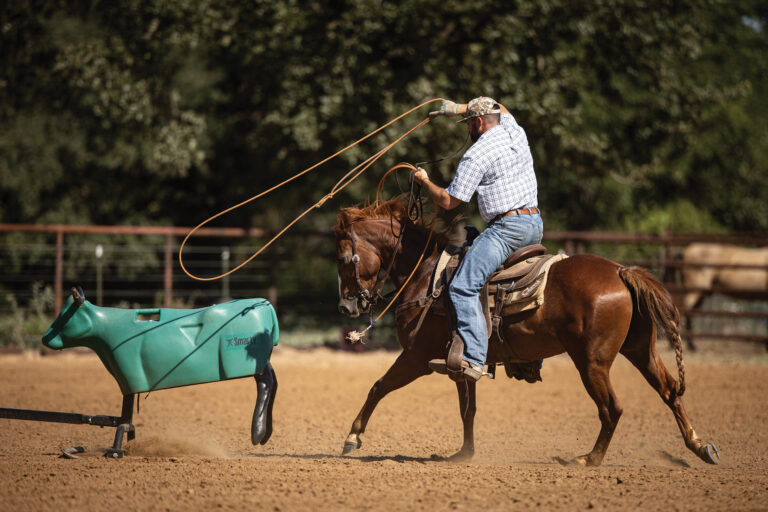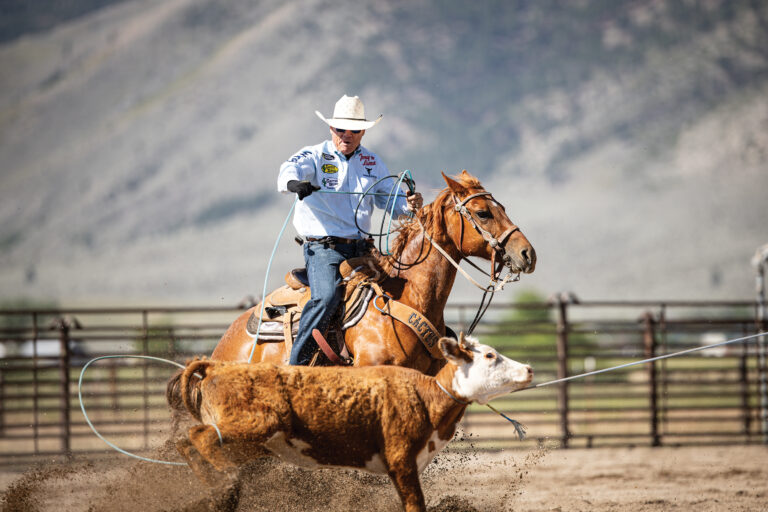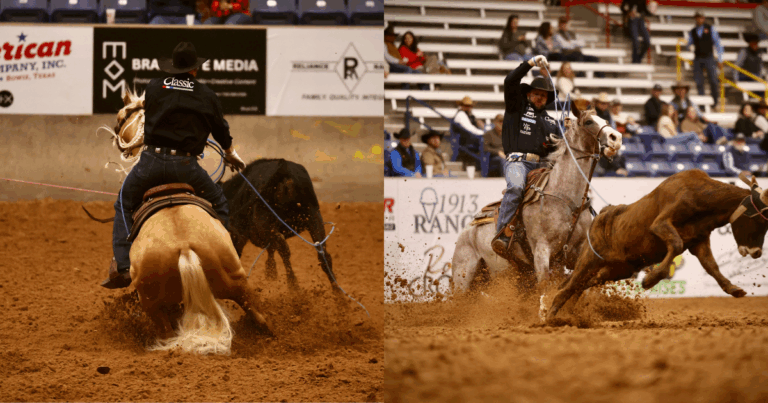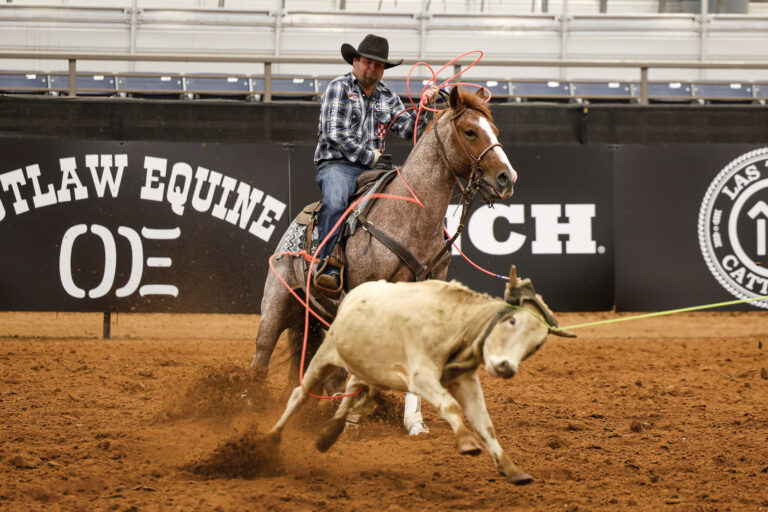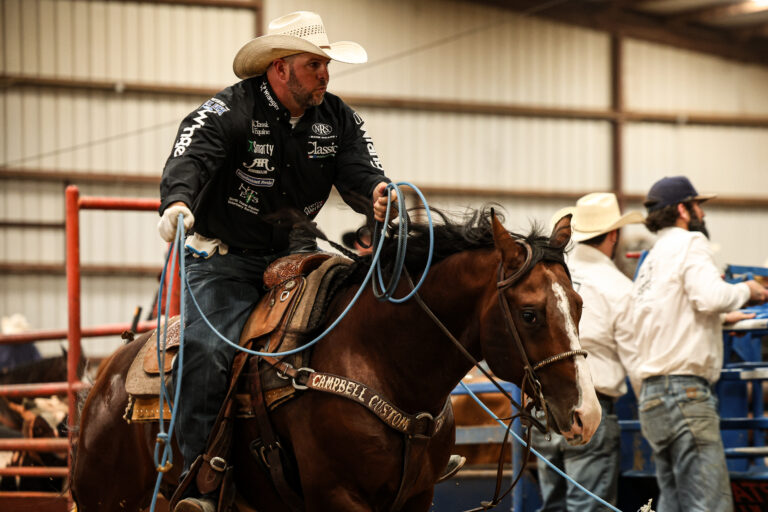Joseph Harrison gives tips on how to avoid common mistakes people make when it comes to positioning your body near the Pipes:
I rope the Pipes a lot, and the more I help people rope, the more I use it. I see a lot of people making some easy-to-fix mistakes, though, when it comes to how you position your body close to the Pipes.
Standing Too Far Away
One thing I see people do heeling the dummy is standing too far away, with too much angle on their heel swing. You’re leaning toward the steer if you’re too far away. Also, if you’re too far away with a steep angle on your rope, your tip is down. You go to throw, and you have no left-leg coverage.
What I try to do is to get plenty close enough that my swing is up over the back, with the tip raised up. If it’s right down his back, I’ve got a chance of hitting him in the head with my tip. The steeper your angle is, the less coverage you have. If I’m high over his back, I get a lot of coverage for that left leg because I have a lot of coverage.
Standing Too Far to the Inside
People [also want] to rope the dummy too far to the inside, with their bodies too much at an angle toward the dummy. Your horse would have to really have his nose tipped to the inside and be pushing left for that to be realistic. A lot of times the steer will hit and come back to you, but if you’re going to throw from there, you’ve got to have even more tip coverage than if you’re square at him. If you’re too far to the inside, from that angle, there’s a lot more things that can go wrong. When we get square with him, if he comes inside, we’ve got a better chance of being able to follow him. If he pops outside, we can set it down and watch him get in it. But from too far right, and he pops away from us, our bottom strand will come up and our tip will fall and, if he picks that leg up, we’ll lose it.
Controlling Your Horse’s Shoulders and Hips with Joseph Harrison
What I like better about being square with the Pipes and live steers: If I’m square with him, and my partner has him in tow and he takes off away from me, my rope has a better chance to be in the crease of both hocks. My bottom strand will come up and stay there if he’s got forward momentum to him. That will keep both legs [caught] on a steer.





